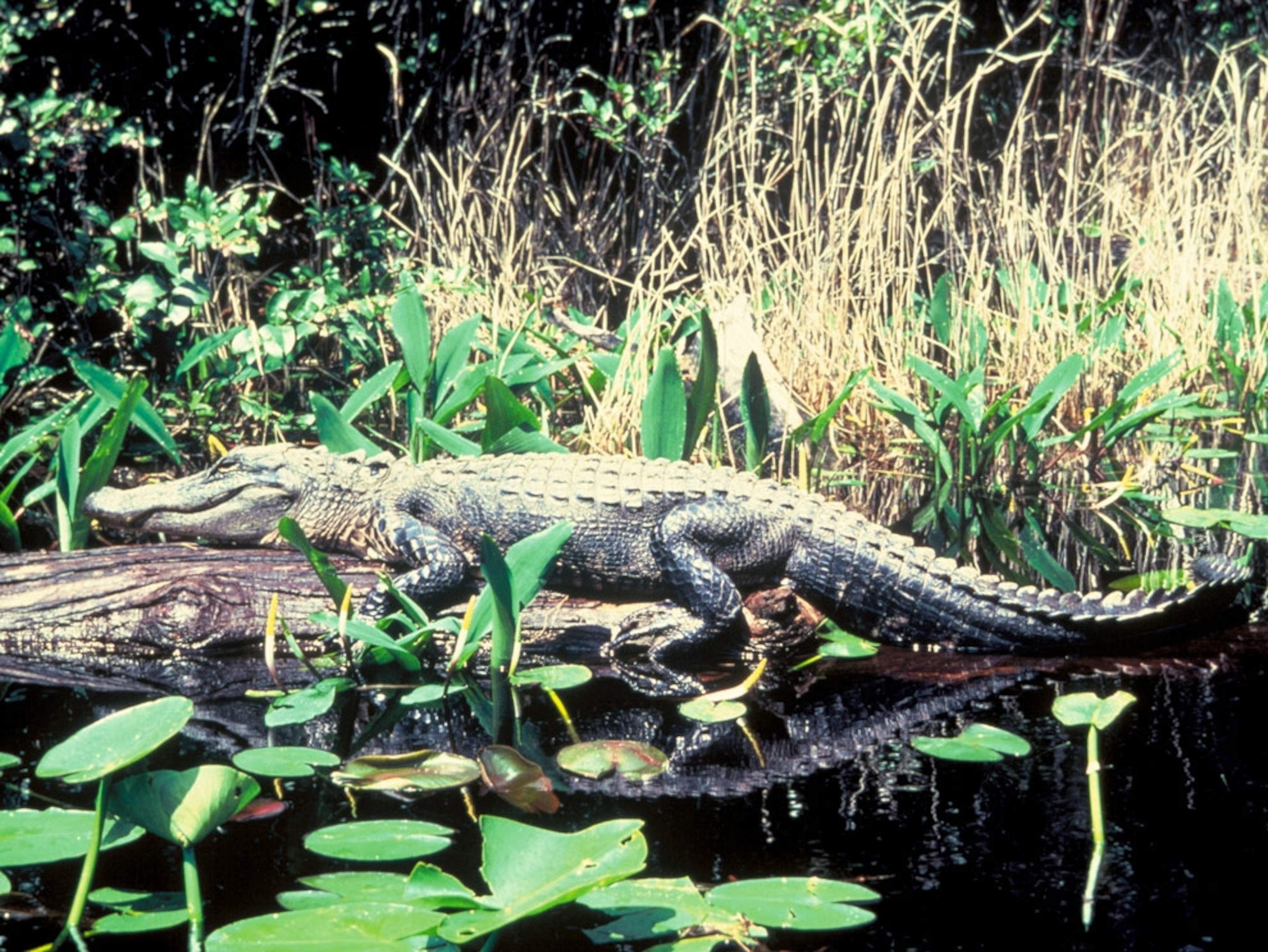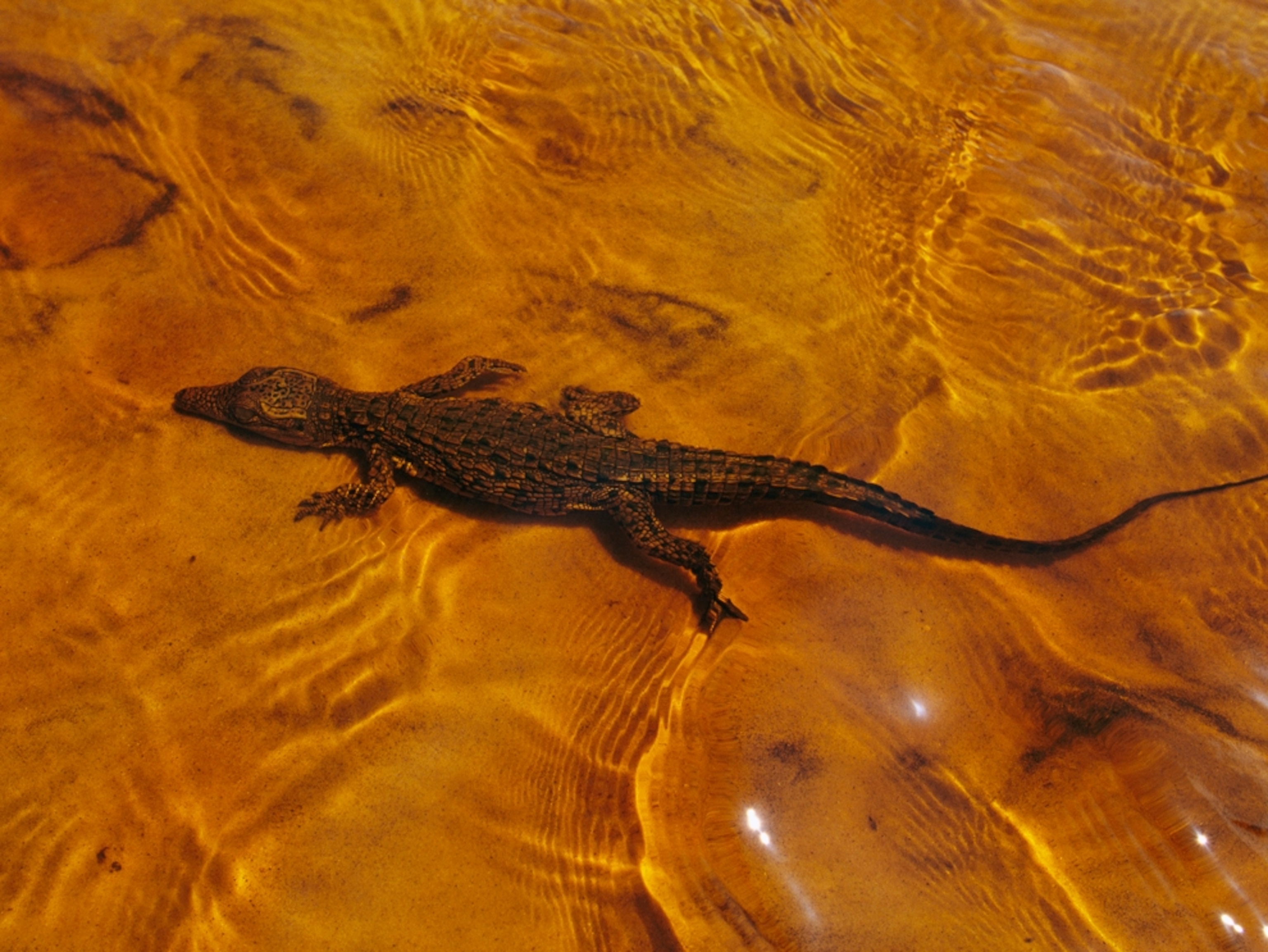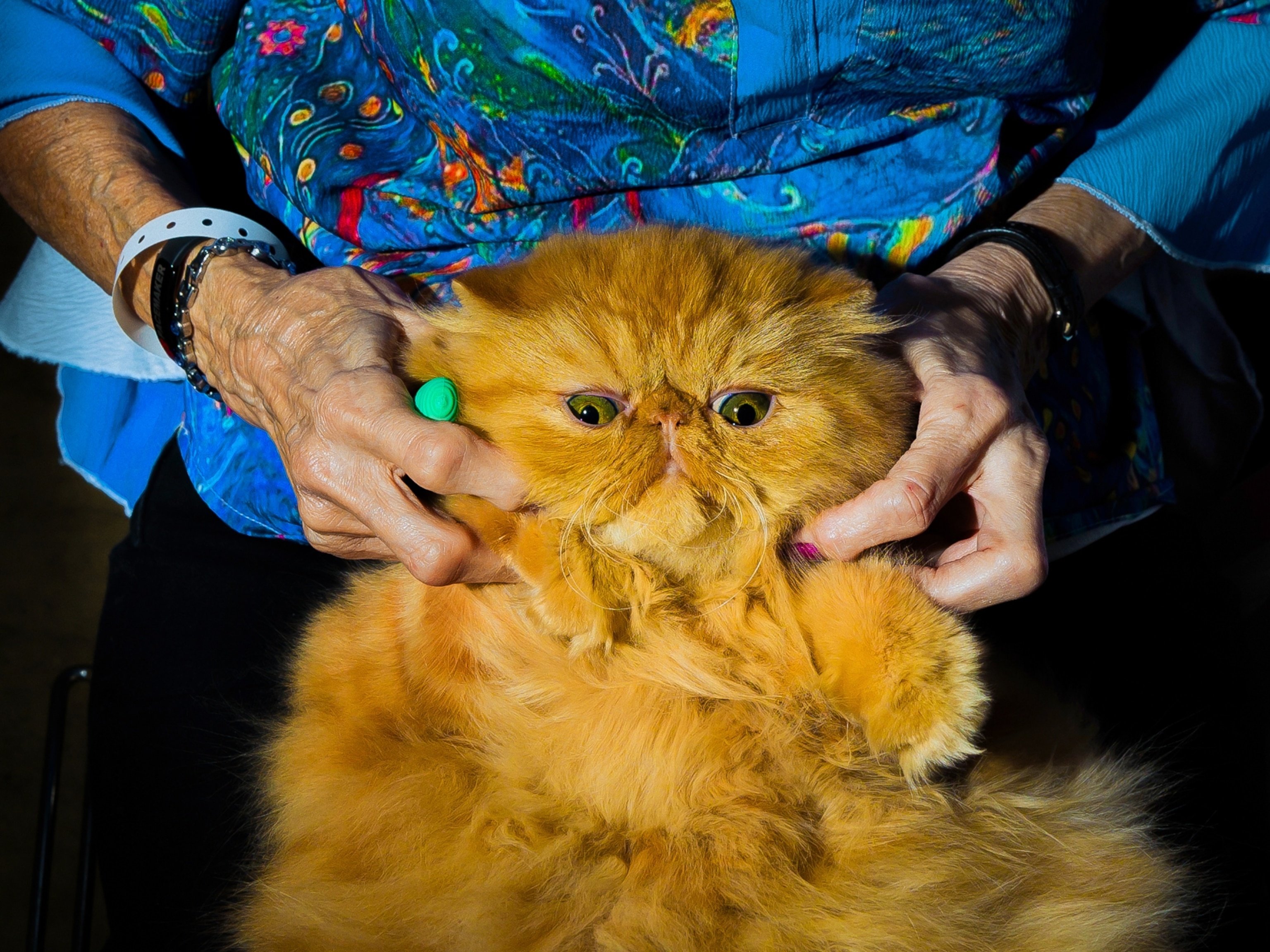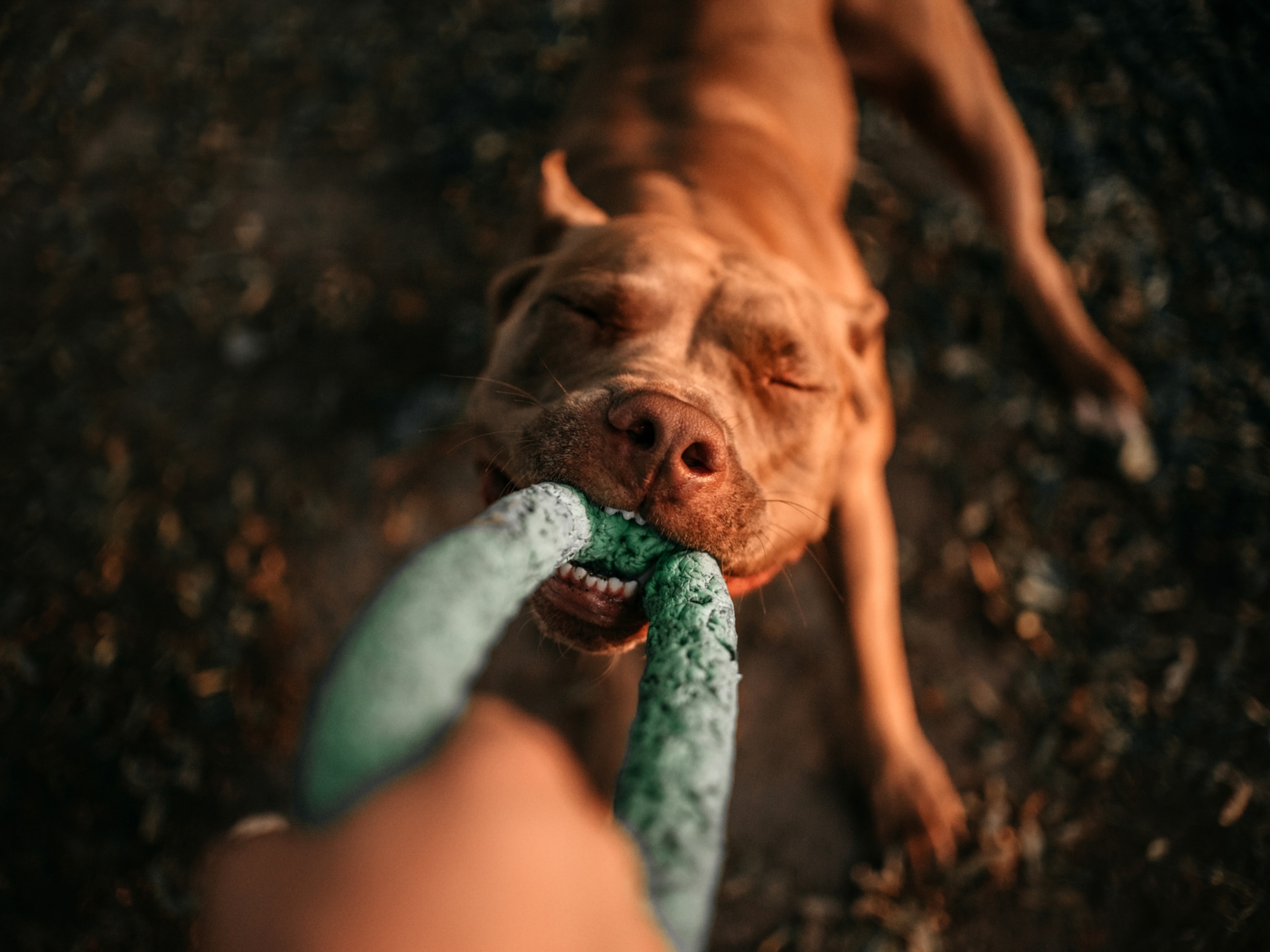
Alligators make terrible pets: 'You're basically dealing with a dinosaur.'
A rise in the abandoned reptiles around the United States—including two recently found in a Kansas creek—has raised concern among experts.
Something unusual was lurking in Wildcat Creek, in Manhattan, Kansas, a small college town on the prairie. In June, townsfolk spotted two American alligators swimming in a body of water better known for reptiles such as garter snakes and painted turtles.
Further investigation revealed that a thief—still at large—had stolen the gators from a local pet shop and released them into the creek. Rescuers set humane traps to catch the animals, but the female, Pebbles, died after falling into the water inside one of these traps. The male, Beauregard, eluded capture until late July, when a construction worker caught and returned him to his owners at Manhattan Reptile World, according to their Facebook page.
The two gators, kept at Manhattan Reptile World under a state zoo permit, had previously been illegal pets, living in a pool and a bathtub in Manhattan and Kansas City, according to a news release. (Learn more about why people want exotic pets.)
The incident—particularly the female’s untimely death—highlights the often problematic, yet not widely known, phenomenon of keeping pet American alligators, which are native to the U.S. Southeast, experts say. (Read more about the exotic pet trade.)
Formerly endangered, American alligators reached their nadir in the 1950s because of overhunting and habitat loss, but conservation efforts returned the species to healthy numbers by the mid-1980s. Weighing up to a thousand pounds, these behemoths live in wetlands, rivers, lakes, and swamps, feeding primarily on fish, turtles, snakes, and small mammals. (Watch alligators on the hunt.)
Official numbers on how many American alligators are kept as pets don’t exist, but some states have estimates. There are likely 5,000 in Michigan; at least 50 in Phoenix, Arizona; and as many as 52 of the prehistoric reptiles are surrendered to the city of Chicago each year.
In recent years, wildlife officials across the nation have noticed an uptick in alligators abandoned in parks, creeks, and other public places. In 2019, six pet alligators went on the loose in Detroit (one was shot to death), and in August, the New Mexico Department of Game and Fish seized an alligator from a Santa Fe man who had kept the animal illegally for 10 years.
Gator laws
Ownership laws for alligators vary by state and municipality. While keeping them is legal in Michigan, parts of Detroit ban private ownership. In other states, such as New Mexico, pet gators are illegal without a permit, and in Arizona and New York, private ownership is banned.
(Stealthy alligators dive, rise and roll by moving their lungs)
Such regulations don’t faze many collectors who covet palm-size baby gators. A quick search for pet alligators turns up dozens of websites that sell juvenile alligators for anywhere from $150 to $15,000 (for an albino animal). Most of these young reptiles come from legal alligator breeders in the Southeast who sell the animals wholesale to vendors.
The black market trade of these animals has long been “a big problem,” according to Matt Eschenbrenner, director of animal care and conservation at the Great Plains Zoo and Delbridge Museum of Natural History, in Sioux Falls, South Dakota. It’s likely that most of these animals originate in Florida, says Russ Johnson, president of the Phoenix Herpetological Society.
Florida has strict alligator farming laws and inspection protocols, but not all breeders play by the rules. In 2018, the state reported 21 active alligator farms that produced legal hides and meat. Not present on this list are unlicensed operations that illegally breed gators as pets. (Read about the largest seizure to date of illegally caught reptiles.)
Bone breakers
Most gator pet owners are unprepared to care for an adult animal that can reach 14 feet and live 80 years, Johnson says. When that cute baby gets bigger and less manageable, the owner faces a real conundrum. “It’s not like owning a cat or dog that will return love,” he adds. “You’re basically dealing with a dinosaur.”
To capture their prey, alligators are armed with strong jaws lined with up to 80 teeth. If captive gators don’t get enough food—a common problem—they can get cranky and bite, easily breaking through human bone. “It’s not the alligator’s fault,” Johnson says. “The alligator was just being an alligator.”
This happens, he says, because feeding an alligator is expensive. Adults need nourishment such as whole chickens or pork with the bone, and Johnson says he pays about $150 a month to feed each adult alligator at his rescue facility.
Alligators also need a large pool of water to thrive. Bathtubs and kiddie pools, preferred by many pet owners, aren’t good enough, Eschenbrenner says. Buoyancy relieves the weight of an alligator’s internal organs, and if the water isn’t deep enough for a gator to float, it can suffer pain and even die from the pressure of its own internal weight. Plentiful water helps alligators feel safe and calm in their environment, he adds.
The right temperature is a requirement too. As natives of the U.S. Southeast, alligators are used to living in a warm-to-hot environment, and pet owners may need to use several heat lamps to keep the cold-blooded animals warm, Eschenbrenner says.
Health woes
Because many people keep pet alligators illegally, the animals miss out on routine veterinary care. As a result, serious health problems may go unchecked for years.
Eschenbrenner recalls one alligator rescued from a home in New Mexico that had been kept in a kiddie pool for a decade. The animal was obese, but even so, poor nutrition had stunted its growth and caused dental problems—it was unable to fully close its mouth because the top and bottom jaws were misaligned.
Many pet alligators develop weakened bones because of a nutrient-poor diet, such as hamburger meat or deboned chicken. One alligator rescued in Arizona was so low on calcium that its jaws were “like a rubber band,” Johnson says. Another was so malnourished that it broke its back leg while trying to escape rescuers.
Unnatural surfaces can be harmful: One alligator raised on a glass platform had a disfigured skeleton because of improperly settled bones.
Considering the difficulties of keeping an alligator, much less a healthy one, it’s no surprise that when the animals become too difficult to care for, their owners abandon or kill them—or surrender them to the authorities, Johnson says.
Good homes for gators
There are people trying to make life better for abandoned alligators. For example, the Phoenix Herpetological Society, in Arizona, provides a natural, semi-wild habitat for 15 rescued alligators at its 2.5-acre sanctuary—along with a number of other abandoned, abused, and confiscated reptiles. The facility, which has an on-site reptile clinic and research center, aims to find permanent homes for many of its animals, often sending them to other reputable sanctuaries around the country.
The best solution, Eschenbrenner says, is not to own an alligator in the first place. “I would never have an animal like this as a pet, period.”
A good option for alligator enthusiasts is to appreciate them from a distance by supporting conservation groups or a certified zoo that keeps the animals properly for public education, he says.
Owning one is “doing an injustice to this animal,” Eschenbrenner says. “You’re causing it more harm than good.”
















